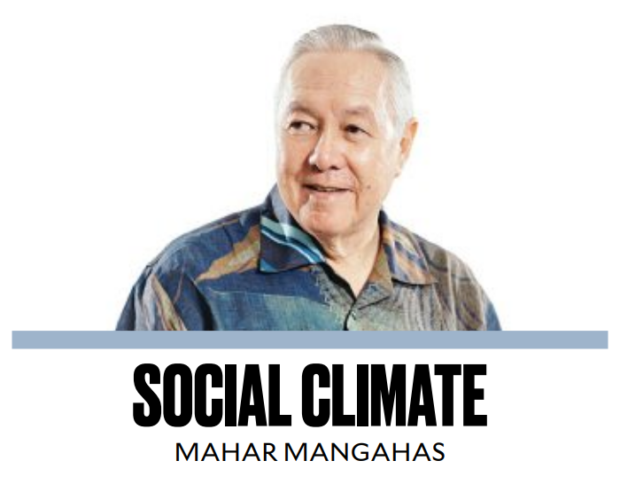When I became a rice economist sixty years ago, it was not by choice but rather because the University of the Philippines (UP) designated me for the role as they were expanding their economics faculty. At the time, I was just a humble economics instructor, lacking any knowledge about agriculture. I only knew how to care for the plants in our family garden on the Diliman campus, which was quite labor-intensive.
The department chair, José “Pepe” Encarnación Jr., assured me that this was not a problem. He arranged for me to spend a year in Los Baños to learn about agricultural economics. This led me to the International Rice Research Institute (IRRI) where I worked as a research assistant for Vernon “Vern” Ruttan, who was an agricultural economist. IRRI had just been established in 1960, and by 1964, when I joined, it was still in its infancy. Pepe and Vern were among my earliest mentors.
In 1965, under Vern’s guidance, I completed my master’s thesis for UP titled “The response of Philippine rice farmers to price.” This study was part of a larger research trend led by the University of Chicago, exploring whether poor farmers, like those in the Philippines, made decisions in a rational manner similar to their wealthier counterparts in developed nations. Our inspiration was Theodore W. Schultz, a professor at the University of Chicago and author of “Transforming Traditional Agriculture.” The research confirmed that Filipino farmers respond to anticipated higher rice prices by allocating more land for rice cultivation, a behavior comparable to American, Indian, and Indonesian farmers.
My acceptance to the University of Chicago thrilled me. T.W. Schultz became my third mentor, although he had not yet received his Nobel Prize in Economics. I decided to focus on agriculture (my UP assignment) and econometrics (my personal interest) as special topics, with the intention of teaching them later on. Under Schultz’s guidance, I completed my doctoral thesis in 1970 titled “An economic analysis of the diffusion of new rice varieties in Central Luzon.” The research was based on survey data provided by the former Bureau of Agricultural Economics.
While working on my thesis in Diliman from 1968 to 1969, I published an article titled “The effect of importation on the price of rice.” This piece estimated that the impact of rice imports on price dampening was smaller compared to an equivalent amount of domestic rice production. I argued that the government’s predictable pattern of importing rice only during election times allowed the market to adjust accordingly. During the years 1970-1972, I also served as a consultant for various entities, including Secretary Rafael Salas, the Rice and Corn Administration, a study on rice intensification in Indonesia, and a survey of Nueva Ecija farmers affected by “Operation Land Transfer” at the Ateneo de Manila’s Institute of Philippine Culture.
I taught agricultural economics and econometrics at the UP School of Economics until my full-time transfer to the Development Academy of the Philippines in 1981. In 1995, there was a rice crisis in August due to the government’s failure to arrange for rice imports early in the year, despite having the authority to do so. The administration, led by Fidel Ramos, believed that not importing rice would promote national pride and serve as good publicity before the May election. As an experienced rice economist, I welcomed Republic Act No. 11203 (2019), known as the “Rice Tariffication Law,” which allowed liberalization of rice importation and removed quantitative import restrictions. This law marked the first time in Philippine history that the private sector could freely participate in rice importation, and it was a move that I, along with my colleagues in the Foundation for Economic Freedom, enthusiastically supported.
However, in September 2023, a perplexing presidential order was issued, preventing rice retailers from selling rice above a specific price per kilo. This order demonstrates a lack of understanding of the basic principles of supply and demand. Supporters of the administration are already assuring the public that it is a temporary measure. Those affected will have to find ways to comply formally while seeking opportunities to evade the restrictions in reality. Such an order will inevitably result in a decline in the quality of rice sold, as sellers may resort to secret transactions or even cease selling rice altogether, leaving the responsibility to the government. Buyers, too, will engage in covert business transactions. The economic implications of this order are dubious at best. Is it meant to serve political interests? If so, how and for whose benefit?
If you have any inquiries, you can contact me through [email protected].
Your subscription could not be saved. Please try again.
Your subscription has been successful.
Read Next
Don’t miss out on the latest news and information. Subscribe to INQUIRER PLUS to get access to The Philippine Daily Inquirer & other 70+ titles, share up to 5 gadgets, listen to the news, download as early as 4am & share articles on social media. Call 896 6000.
Denial of responsibility! Vigour Times is an automatic aggregator of Global media. In each content, the hyperlink to the primary source is specified. All trademarks belong to their rightful owners, and all materials to their authors. For any complaint, please reach us at – [email protected]. We will take necessary action within 24 hours.


